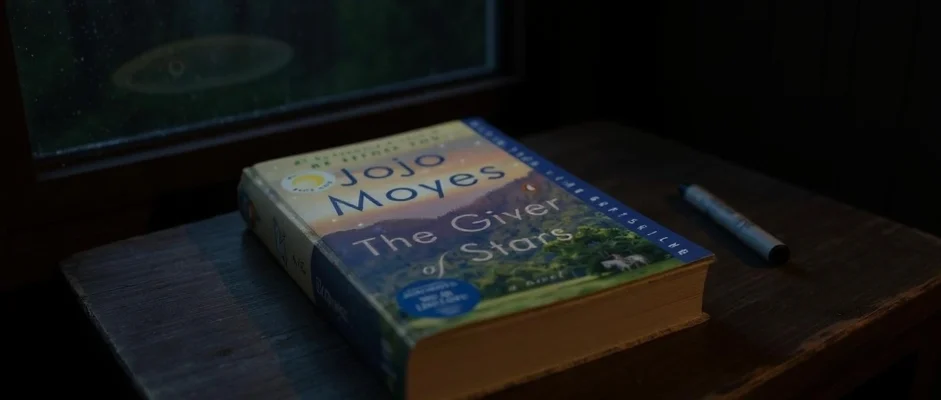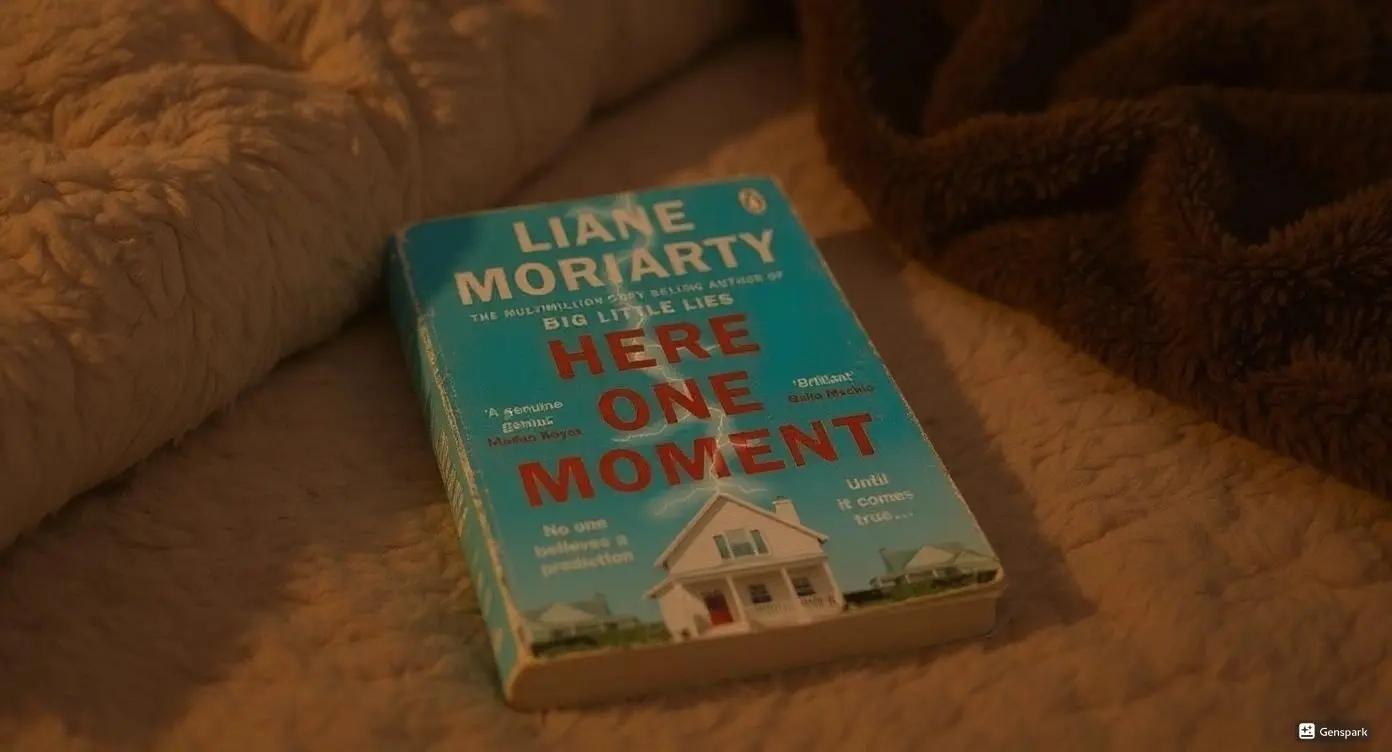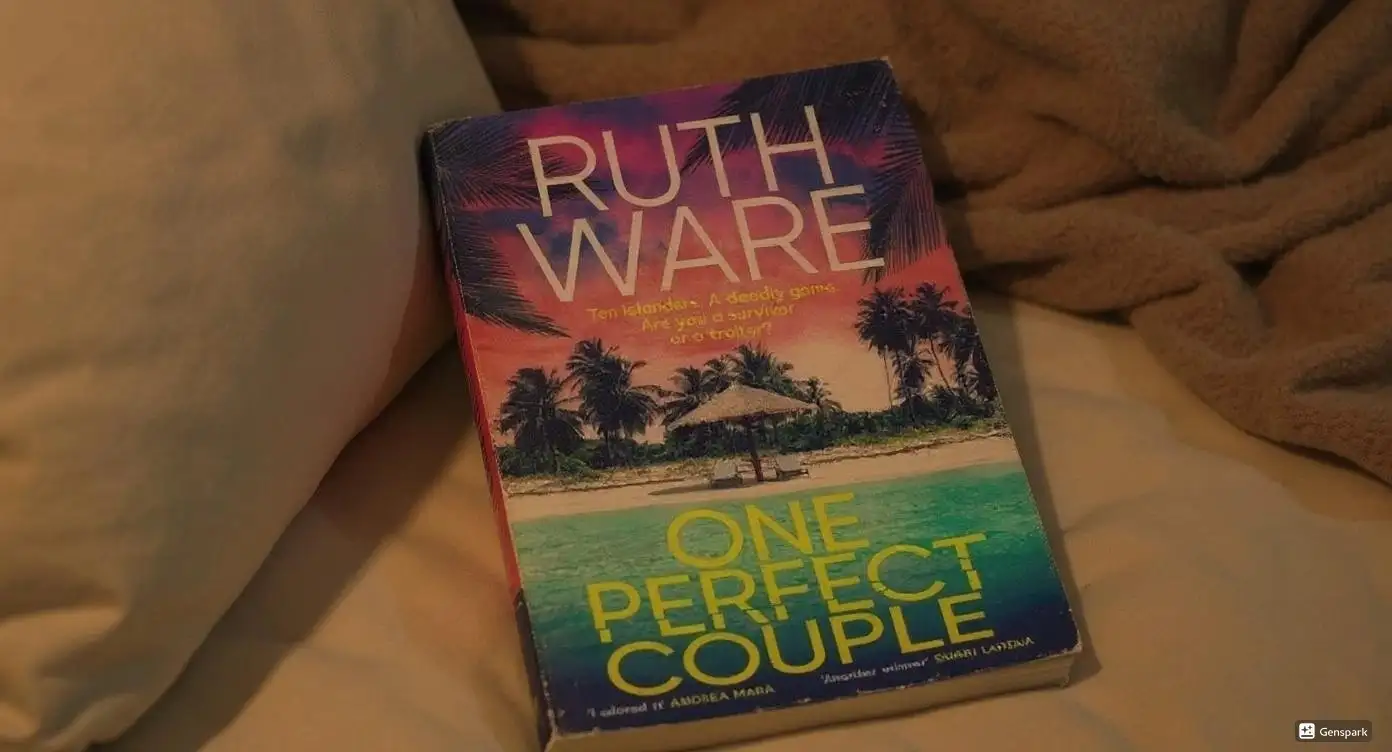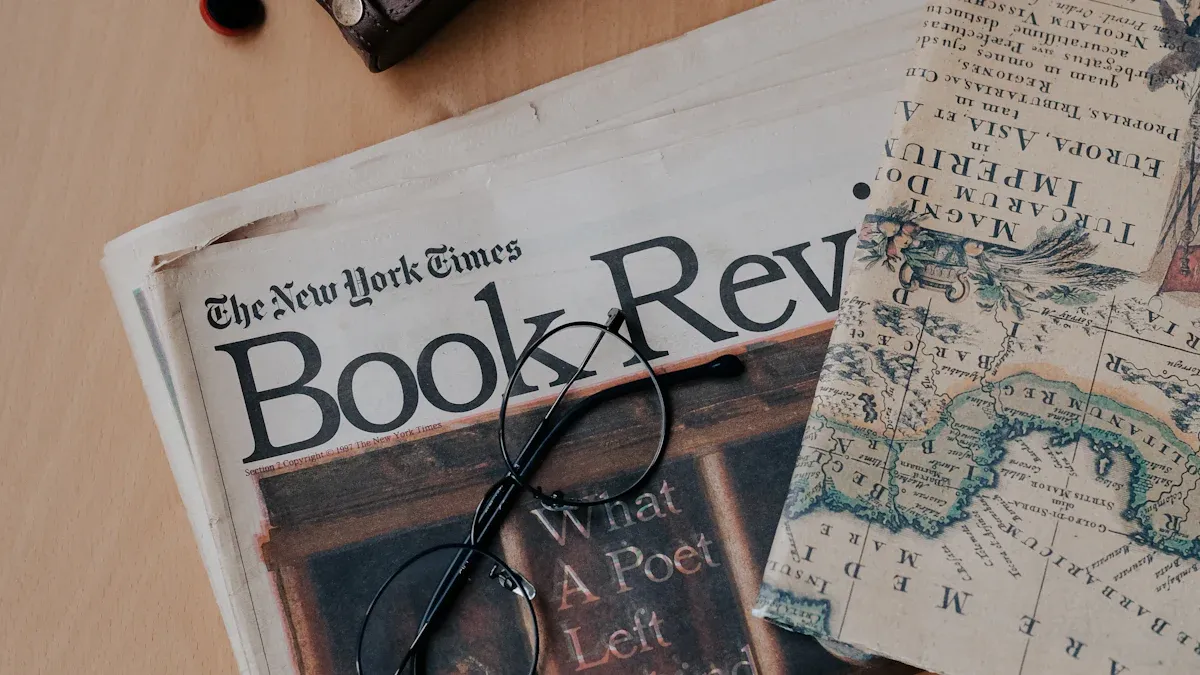I picked up The Giver of Stars during a rainy November weekend, expecting another predictable historical fiction novel. What I found instead was a book that kept me reading until 3 AM, completely absorbed in the lives of Kentucky’s horseback librarians during the 1930s Depression era. Based on the real WPA Horseback Librarian programme set up by Eleanor Roosevelt to improve literacy within Kentucky, this story resonated with me on multiple levels as someone who’s reviewed over 200 historical novels in the past five years.
Moyes crafts a mature story about strong women during a time where women weren’t allowed to be strong, exploring themes that go far beyond romance into social justice, female empowerment, and the transformative power of literacy. The book follows Alice Wright, an English woman who escapes her suffocating marriage by joining the Packhorse Library initiative, where she finds purpose, friendship, and herself.
What sets this apart from other historical fiction is Moyes’ ability to weave together multiple storylines without losing focus on the central message: books have the power to change lives. After reading thousands of pages about Depression-era America, I can confidently say this book offers fresh perspectives on female solidarity and community resistance that left me questioning my assumptions about rural life in 1930s Kentucky.
Key Takeaways
The power of female friendship transcends social boundaries and creates unbreakable bonds that can withstand community hostility and personal hardship.
Literacy serves as both a practical tool for survival and a weapon against ignorance, prejudice, and systemic oppression in rural communities.
Personal transformation requires courage to abandon societal expectations and embrace authentic self-expression, even when facing family opposition.
Historical fiction works best when it balances entertainment with education, teaching readers about forgotten programs like the Packhorse Library initiative.
Social justice battles of the past mirror contemporary struggles, showing how literature can spark conversations about racism, classism, and gender inequality.
Basic Book Details:
- Publishing Information: October 8, 2019 by Pamela Dorman Books
- Genre: Historical Fiction
- Plot: English woman joins Kentucky’s horseback library program during the Great Depression
- Series Information: Standalone novel
- Page Count: 448 pages
- Main Characters: Alice Wright (English bride turned librarian), Margery O’Hare (independent mountain woman), Bennett Van Cleve (Alice’s controlling husband)
Plot Summary And Historical Foundation
Depression-Era Kentucky Setting And Pack Horse Library Origins
The story is inspired by the real-life packhorse librarians, which was a program that involved around 30 libraries in Appalachia during Franklin D. Roosevelt’s administration. I was fascinated by how Moyes transported me to the coal mining regions of Kentucky, where poverty and isolation created perfect conditions for the WPA’s literacy initiative.
The historical backdrop feels authentic without overwhelming the narrative. Moyes captures the desperation of families struggling during the Great Depression while highlighting how books became lifelines for isolated communities. The Pack Horse Library program emerges as both a government employment opportunity and a radical social experiment.
Alice Wright’s Journey From English Bride To Empowered Librarian
Alice begins as a naive English woman who marries Bennett Van Cleve to escape her controlling father, only to find herself trapped in another suffocating relationship. Her transformation from submissive wife to confident librarian drives the entire narrative forward with believable character development.
I found Alice’s evolution particularly compelling because Moyes avoids the “instant empowerment” trope common in historical fiction. Instead, Alice’s growth feels organic, shaped by her interactions with the mountain women she serves and the books she carries across dangerous terrain.
Character Development And Relationships
Alice Wright’s Transformation And Personal Growth Arc
Alice’s character arc represents one of the most satisfying transformations I’ve encountered in recent historical fiction. She begins as a woman who defines herself through male approval and gradually develops her own moral compass and sense of purpose.
The relationship between Alice and her husband Bennett serves as a masterclass in depicting emotional manipulation without resorting to melodrama. Moyes shows how controlling behavior manifests in seemingly caring gestures, creating a realistic portrayal of domestic power dynamics.
Margery O’Hare’s Feminist Leadership And Independent Spirit
Margery O’Hare emerges as the heart of the novel – a mountain woman who refuses to conform to traditional gender roles despite community pressure. Her romance with Sven challenges both racial and social conventions, adding layers of complexity to the story.
I appreciated how Moyes presents Margery as flawed yet admirable, showing her struggle with authority while maintaining her commitment to serving her community. Her leadership of the library program demonstrates how natural ability often matters more than formal education.
Themes And Social Commentary
Female Empowerment Through Literacy And Sisterhood
The book celebrates love, reading, knowledge, and female friendship, creating a powerful message about how women support each other during challenging times. The bond between the librarians transcends class and background differences, forming a chosen family.
Moyes skillfully demonstrates how access to books transforms not just individual lives but entire communities. The women don’t just deliver literature; they become catalysts for social change, challenging local power structures through education.
Social Justice Issues Including Racism And Economic Inequality
The story addresses courage, loyalty, justice, passion, ignorance, abuse, discrimination and racism without feeling preachy or anachronistic. The treatment of African American characters feels respectful and historically accurate.
The economic disparities between coal mining families and town merchants create authentic conflict that drives plot development. Moyes shows how poverty affects access to education while highlighting the courage required to challenge established hierarchies.
Writing Style And Literary Craft
Moyes’ Narrative Techniques And Atmospheric World-Building
Moyes excels at creating immersive settings that feel lived-in rather than researched. Her descriptions of Kentucky’s mountain terrain are vivid without becoming overly descriptive, maintaining narrative momentum while establishing atmosphere.
The author’s background as a journalist shows in her precise, accessible prose style. She avoids purple prose while still creating emotional resonance, striking a balance that serves both literary and commercial audiences.
Integration Of Historical Research With Fictional Storytelling
Based on a true story rooted in America’s past, the book is unparalleled in its scope and epic in its storytelling, successfully blending documented history with imaginative character development. The research feels seamless rather than intrusive.
Moyes incorporates period-appropriate dialogue and social attitudes without alienating modern readers. Her handling of sensitive topics like racism and domestic violence demonstrates careful consideration of historical context.

Pros
Exceptional Historical Detail: The Packhorse Library program comes alive through meticulous research and authentic period details that educate without overwhelming the narrative flow.
Complex Female Characters: Each woman possesses distinct motivations, flaws, and strengths, avoiding the “strong female character” stereotype common in historical fiction.
Balanced Social Commentary: Addresses serious issues like racism and gender inequality while maintaining an engaging, hopeful tone that doesn’t lecture readers.
Authentic Dialogue: Character voices feel true to their backgrounds and time period without becoming difficult to understand for contemporary audiences.
Emotional Resonance: The friendships and conflicts feel genuine, creating investment in character outcomes that extends beyond the final page.
Cons
Predictable Romance Elements: Some romantic plot developments follow familiar patterns that feel contrived compared to the more original friendship storylines.
Convenient Plot Resolutions: Several conflicts resolve too neatly, particularly the legal storyline involving Margery that feels somewhat artificial.
Limited Male Character Development: Most male characters remain fairly one-dimensional, serving primarily as obstacles or love interests rather than fully realized individuals.
Pacing Issues: The middle section drags slightly as Moyes establishes community relationships, though the payoff justifies the slower development.
| Aspect | Rating | Comments |
|---|---|---|
| Character Development | 8/10 | Strong female leads, weak male characters |
| Historical Accuracy | 9/10 | Excellent research, authentic details |
| Writing Style | 7/10 | Clear, accessible, occasionally predictable |
| Emotional Impact | 8/10 | Genuine relationships, satisfying growth |
| Overall Entertainment | 7/10 | Engaging despite familiar elements |
Final Verdict
Dionysus Reviews Rating: 7/10
The Giver of Stars succeeds as both entertainment and education, bringing attention to a forgotten chapter of American history while creating memorable characters worth caring about. Despite some formulaic romance elements, the book’s exploration of female friendship and social justice issues makes it stand out in the crowded historical fiction market.
I recommend this book for readers who enjoy character-driven historical fiction with strong themes of empowerment and community. It’s particularly suitable for book clubs interested in discussing social issues and women’s history. The accessible writing style makes it appealing to both casual readers and those seeking more substantial literary content.
While not groundbreaking in terms of narrative innovation, The Giver of Stars delivers exactly what it promises: a heartwarming story about the power of books to change lives. After finishing it, I immediately wanted to learn more about the real Packhorse Library program, which speaks to Moyes’ success in honoring this remarkable piece of history.
For fans of The Book Woman of Troublesome Creek or The Four Winds, this book offers similar themes with Moyes’ particular brand of emotional storytelling. It’s the kind of book that reminds you why historical fiction matters – not just for entertainment, but for understanding how past struggles connect to present challenges.
Sip The Unknown—Discover Stories You Never Knew You’d Love!
Dionysus Reviews Has A Book For Every Mood
Biography & Memoir
Fiction
Mystery & Detective
Nonfiction
Philosophy
Psychology
Romance
Science Fiction & Fantasy
Teens & Young Adult
Thriller & Suspense
Frequently Asked Questions
What books inspired The Giver of Stars?
Moyes drew inspiration from multiple historical sources about the actual Packhorse Library program, including oral histories from surviving librarians and their families. The National Archives provided documentation about the Works Progress Administration’s literacy initiatives that formed the backbone of her research.
How accurate is the portrayal of 1930s Kentucky?
The social dynamics, economic conditions, and cultural attitudes depicted in the novel align closely with historical records from the Great Depression era. Moyes consulted academic sources from the University of Kentucky to ensure authentic representation of Appalachian communities during this period.
Is The Giver of Stars part of a series?
No, this is a standalone novel. However, readers interested in similar themes might enjoy Moyes’ other historical fiction works or explore The Book Woman Returns, which continues the story of Kentucky’s horseback librarians from a different author’s perspective.
How does this compare to other books about the Packhorse Library program?
The Giver of Stars focuses more on female relationships and personal transformation, while The Book Woman of Troublesome Creek by Kim Michele Richardson emphasizes the racial and social challenges faced by a blue-skinned woman working as a librarian. Both books complement each other in exploring different aspects of this historical program.
What reading level is appropriate for this book?
The novel is suitable for mature young adult readers (16+) and adult audiences. While the prose is accessible, the themes of domestic violence, racism, and social inequality require emotional maturity to fully appreciate. The American Library Association would likely classify this as adult fiction due to its thematic content.









